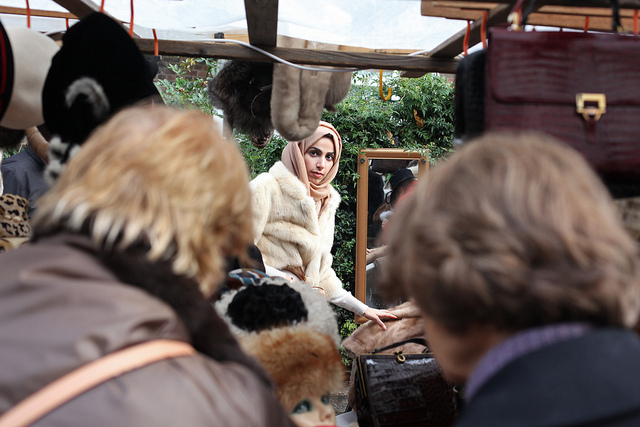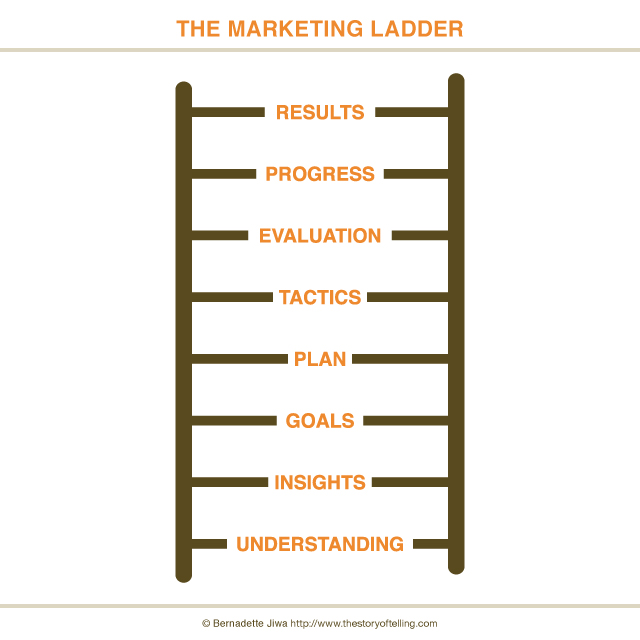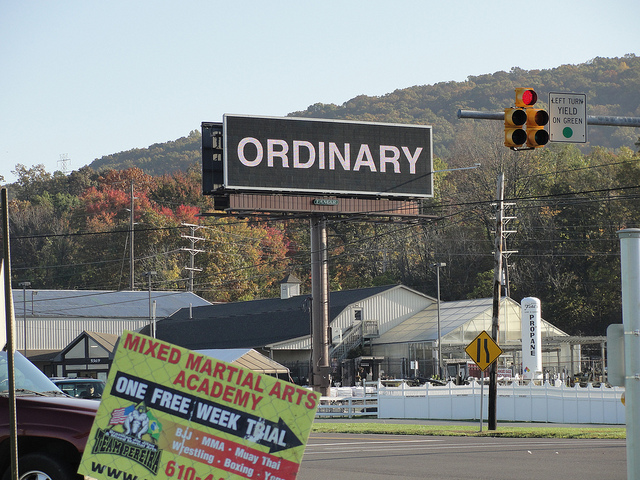Unlock the Magic in Your Story Now
Get the Free 20 questions to Ask Before Launching Your Idea workbook when you sign up for occasional updates.
Get the Free 20 questions to Ask Before Launching Your Idea workbook when you sign up for occasional updates.
Articles filed in: Storytelling
Too Cheap To Be Good
filed in Marketing, Storytelling, Strategy
 When a friend was shopping around for a logo designer she got several recommendations and then asked for quotes. The range was extraordinary, but no more extraordinary than her reaction.
When a friend was shopping around for a logo designer she got several recommendations and then asked for quotes. The range was extraordinary, but no more extraordinary than her reaction.
The companies that quoted below what she felt was reasonable were immediately discounted and they lost her business. They were just too cheap to be good.
Why do we pay more to sit in row F than row Z?
What makes a $10 chocolate bar worth $10?
Why is a ticket to TED worth $8,500 when you can watch all the talks online?
Value is always measured in more than the sticker price. Everything we do is sending a signal to our customers and giving them a story to tell, both to the world and to themselves.
Three questions for you then…
1. What’s the story your prospective customers tell themselves about you?
2. Is it the story you want them to be telling?
3. What do you need to change or amplify to make that happen?
The assumptions we make and the answers we give are not necessarily true—they are stories we (need to) believe.
Image by Rigmarole.
How To Tell The Story Of Your Products
filed in Marketing, Storytelling, Strategy
 Why is real estate copywriting so terrible? Maybe it’s not that bad in your town or city, but wherever I have lived the copy seems to serve one purpose—to fill the space between the images and the floor plan in the brochure.
Why is real estate copywriting so terrible? Maybe it’s not that bad in your town or city, but wherever I have lived the copy seems to serve one purpose—to fill the space between the images and the floor plan in the brochure.
Here are a couple of examples of copy written to sell million dollar plus homes.
The Finest Traditions – Attuned To Today
Renovated with a respect for its period origins, defined by a distinctive designer edge, [address] is a stunning Victorian terrace that’s entirely in tune with the contemporary era. Impressive internal proportions that make the utmost of a traditional inner city allotment include refined sitting and dining rooms, each retaining elegant marble mantles around efficient gas Jetmaster fire places. To the rear, northern light and memorable luxury complement a living/dining area accompanied by a kitchen featuring marble and stainless steel surfaces and a walk down wine cellar. Three upstairs bedrooms surrounding a central bathroom provide instant appeal, including a main bedroom with a superb ensuite and evocative original balcony. A sunny tranquil garden of signature [Company] Garden Architecture style creates an ideal conclusion, complemented by rear access to Smith Street, in a great setting close to the best of [names of good suburbs].
And the other.
Designer Style, Definitive Location
Beautifully appointed, this contemporary three-bedroom town residence flows over three levels, situated moments from vibrant [street name] and the beach. Dynamic distribution of natural light fills the stunning whole floor living area including lounge/dining and pristine open-plan kitchen with stone benchtops, and patio doors open to a north-facing entertaining terrace. Neat mezzanine main bedroom with glass-walled ensuite complements two further bedrooms (BIRs), main bathroom, additional powder room and laundry. Sensational internal and external storage, two secure underground parking spaces and polished floorboards complete this modern abode, a short walk from light rail.
What a huge missed opportunity for the entire industry.
Contrast that with these stories from Kit and Ace written to sell an $88 scarf and a $78 t-shirt.
A cashmere hug on a cold day
Like the first sip of soup on a cold day or a warm body curled up beside you under the blankets, surrounding yourself in warmth tops the list of simple pleasures. The Nolita Scarf brings that feeling to your everyday, whether it’s under your jacket, around your neck, or draped across your shoulders, bring cashmere comfort with you wherever you go.
Everyday is like Sunday
You’re out there changing the game Monday – Friday, making the power women of the world proud. When it gets down to the weekend, let this tee take care of the rest. In soft Technical Cashmere and a relaxed fit – it’s a strategic decision you won’t have to run by the board of directors.
Magic. All the measurements and specs come later because they can and should.
A short guide to writing meaningful product descriptions
1. Pay attention to copy that you respond to.
How does it make you feel and why? What makes it great?
2. Understand the story of the person (singular) you’re selling to.
Don’t put a finger to keypad until you can describe a day in her life.
What does she care about most? Write about that first.
3. Speak to one person.
Treat your copy like a conversation rather than a description or a broadcast.
4. Write like people talk.
Nobody uses words like residence or abode any more.
If you wouldn’t say it don’t type it.
5. Help your customer to imagine.
Describe her life after she owns this thing.
Evoke feelings and emotions instead of listing the facts.
6. Simple is better.
Write something that means something.
Avoid jargon, meaningless adjectives and words that you think make you sound good.
The best product descriptions don’t describe the product—they describe the feeling.
There is your customer’s life before the product and her life afterwards.
People don’t buy the thing, they buy the feeling.
Image by Maria Morri.
Your Brand Story Is More Than What You Say
filed in Marketing, Storytelling, Strategy
 It’s a chilly autumn morning and the waitress in the cafe down the street is folding blankets to put over the chairs outside just in case customers are feeling the cold. The local doctor who is half way through her busy surgery, comes out to the waiting room and invites Adam into her consulting room with a smile and a handshake.
It’s a chilly autumn morning and the waitress in the cafe down the street is folding blankets to put over the chairs outside just in case customers are feeling the cold. The local doctor who is half way through her busy surgery, comes out to the waiting room and invites Adam into her consulting room with a smile and a handshake.
The newspaper headline reports that global food brands are not taking part in an initiative that improves food labelling, so that Australians (obesity rate 63% and climbing), can be better informed, because the truth is inconvenient. Their truth is apparent for all to see.
“Not in a position to comment,” is your comment and your values laid bare.
If you’re not in a position to comment when we ask questions, then you have given up the right to speak to us when it’s convenient to you.
Lack of transparency is not a case of innocent until proven guilty, it’s a signal that there is something to hide. What you don’t do says more about your brand than slick ad campaigns and lines of clever copy on a billboard. What people don’t know can hurt them.
Marketing, in the best sense of the word is an understanding—an exchange between you and the people you hope to serve. People you care enough about to empathise with, help, inform and inspire. People you want to create an affinity with. It should never be about pedalling half-truths down a one-way street for short-term gain.
Thankfully our stories, contributions and legacies are measured in more than share prices, profits and units sold. It’s our actions, not our words that define us.
Image by Roey Ahram.
The Value Of What We Don’t Know
filed in Marketing, Storytelling, Strategy
 Six years. That’s how long it took IKEA to research the South Korean culture before they were ready to open the first store there. Six years of understanding what they didn’t know about the story Korean customers lived and wanted to believe—so that they could tell a story that resonated.
Six years. That’s how long it took IKEA to research the South Korean culture before they were ready to open the first store there. Six years of understanding what they didn’t know about the story Korean customers lived and wanted to believe—so that they could tell a story that resonated.
The goal wasn’t to reinvent what was working for the company, but to find commonalities, ways in which their values and solutions aligned with customers’ worldviews. Products can be the same but worldviews are unique. That’s why the IKEA catalogue is produced in 67 different versions.
Our expertise is worthless without understanding the context in which customers will experience it.
Image by Daniel Lee.
Why You Need To Abandon The ‘Everyone’ Mindset
filed in Marketing, Storytelling, Strategy
 I recently got an email that began….
I recently got an email that began….
‘Hi everyone,’
I didn’t make it past the second word and your customers won’t either.
We are too busy, distracted, tired, wary, focused, selfish, savvy or [fill in your blank here], to care about something that’s for everyone. The only messages that get through are the ones that are intentionally created for you.
1970s TV adverts were for everyone. This was a time when a few big brand players garnered mass audiences, saturated the market and dominated. And while some brands are still playing that game, many more have carved out profitable niches by doing exactly the opposite and talking to ‘someone’ instead.
This thinking is not new of course, but it’s not been leveraged half as much as it should be.
One of the most renowned copywriters in advertising history Bob Levenson, who began his career at New York agency DDB in 1959 shared a little about his process:
“I always started by writing Dear Charlie, like writing to a friend. And then I would say what I had to say, and at the end I would cross out Dear Charlie, and I was all right.”
—Bob Levenson
Today Beardbrand generates $120,000 a month in sales by talking to someone.
Black Milk Clothing has built a community of evangelists and global brand by talking to someone.
The indie innovators of Flow Hive have raised $5 million and counting by telling a story to someone.
They didn’t start with the advantage of a huge marketing budget that enabled them to reach everyone. Where they each began was with a story that resonated deeply with the people who mattered. It worked because they were speaking just to them. And the flip side is you have to take time to know that someone before you can craft a meaningful message.
Image by David Phan.
Before And After
filed in Marketing, Storytelling, Strategy
 Before any business is done you and your potential customer each have a story playing in your head.
Before any business is done you and your potential customer each have a story playing in your head.
There is the worldview you each have before the transaction takes place and the outcome you hope will eventuate afterwards. The outcome that you want and the one that the customer is hoping for may be two totally different things.
The closer you get to aligning your goals—to closing the gap between your desired outcome and the customer’s, the greater the chance you have of succeeding.
Three questions for you then:
1. What’s your potential customer’s ‘before’ story?
2. What’s the ‘after’ she is hoping for?
3. Can you deliver on her desired outcome?
It’s worth spending some time to work this out before you try to enrol her..
Image by Chris Brown.
*Thanks to Seth for the nudge on this one.*
Where Marketing Starts And The Marketing Ladder
filed in Marketing, Storytelling, Strategy
 For many business owners marketing begins with tactics. Someone suggests that printing flyers or making a ‘viral’ video to get the word out is a good idea.
For many business owners marketing begins with tactics. Someone suggests that printing flyers or making a ‘viral’ video to get the word out is a good idea.
Even if the tactic works this time round it doesn’t mean you’ve got a sustainable strategy for connecting with your audience or building your brand.
Think of marketing as a ladder where you make progress from bottom to top.

Understanding comes before insights, goals before a plan.
Tactics come before evaluation, which leads to progress that then drives results.
The best way to navigate a ladder is one rung at a time. Sure—you can try climbing it faster two at a time, but you’re more likely to break your neck that way. And it’s impossible to make progress by starting in the middle. Shouting from any point on the ladder doesn’t work either.
Once you know where you’re going and why it’s a lot easier to get there.
Image by Bill Selak.
What We Value And Reward Defines Us
filed in Marketing, Storytelling, Strategy
 Brian has a tough gig. He works at a call centre for an Internet service provider. You can probably imagine what his day looks like. When we spoke I could hear background noise that sounded like hundreds of other people in a tiny space doing exactly what Brian was trying to do—close the sale.
Brian has a tough gig. He works at a call centre for an Internet service provider. You can probably imagine what his day looks like. When we spoke I could hear background noise that sounded like hundreds of other people in a tiny space doing exactly what Brian was trying to do—close the sale.
Brian spoke really fast, was trained to interrupt when he had enough information to progress the call and to offer the contract that locked people in for two years, unless they asked about the ‘no lock in’ offer. His every action and reaction was a means to a single end. He became anxious when it looked like the sale might slip away when said I didn’t have enough information to make a decision there and then.
“Please don’t call back, or speak to anyone else at [company name]!!
I’d appreciate it if you could respect my situation and the hard work I have done here today.
Let me call you back later today.” he said.
In the eight hours between calls I did a quick Google search for reviews of the company’s service (yes, this is exactly where I should have started—lesson learned). 907 one star reviews don’t lie. Brian tried to explain them away when he called back to close the sale before his long shifted ended. Even though he knew it was hopeless he didn’t stop trying until the bitter end.
None of this is Brian’s fault of course. His way of operating on every sales call is directly related to the type result and reward culture that has been created by the company. Here is a company that celebrates and rewards employees for closing the sale. It’s clear that this is what they prioritise, measure and value. The value of every caller is heightened in the ten minutes before they become a customer. Brian is doing what his boss wants him to do because that’s how he has been trained to survive. Growing the number of sales closed at any cost is how his boss survives too.
Our beliefs and behaviours define our cultures. What we value becomes more valued. What is reinforced drives everything we do, how we show up and who becomes our customer. Above all else this is what shapes our story and no marketing whitewash can stop that being reflected to the outside world.
You get to choose the culture you want to create. You create it by demonstrating that above all else—THIS is what we care about. What do you care about and does it show?
Image by twowest.

 Have you ever noticed what happens at the organic cafe?
Have you ever noticed what happens at the organic cafe?